Ranking all 32 quarterbacks: Where does Derek Carr fit in?

We’re just two weeks away from the start of New Orleans Saints training camp, so it’s a good time to take stock of teams around the league and see how the black and gold stack up.
Today we’re focusing on the game’s most important position: quarterback, where the Saints made a big investment in what they’re hoping to prove an upgrade. But where does Derek Carr rank among his peers? Here’s our take:
Sam Howell, Washington Commanders
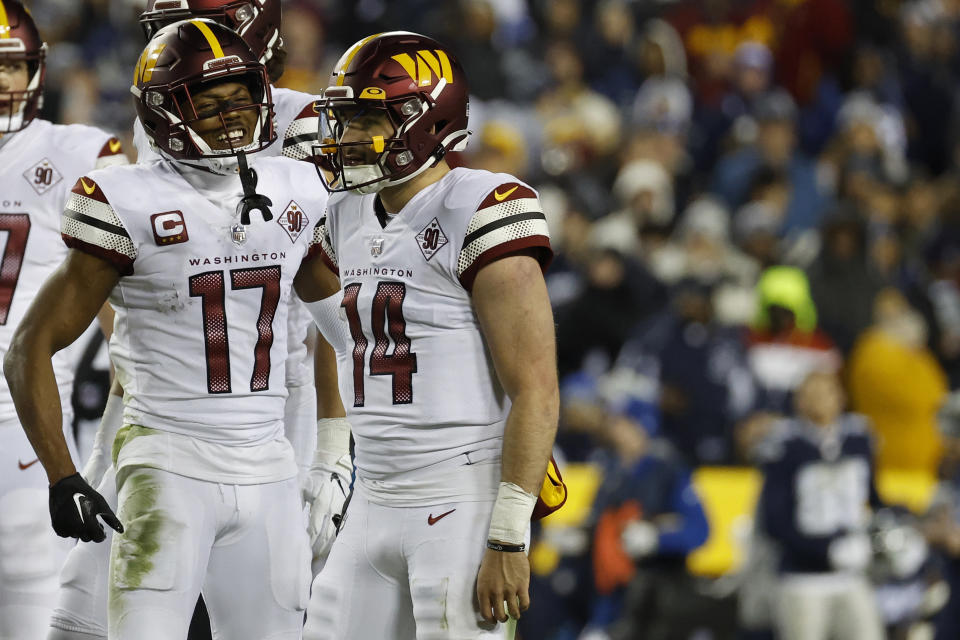
Howell is in a tough spot. Washington didn’t trust him to start over Carson Wentz or Taylor Heinicke last year, but they’ve penciled him in as their guy for 2023 with very little around him. Terry McLaurin is a highly-talented leading receiver but the rest of the receiving corps doesn’t bring much to the table, and with an ownership change in the works he risks being thrown out with the wash if Ron Rivera posts a fourth consecutive record at or under .500. Maybe Howell can surprise some people, but the odds are against him
Baker Mayfield, Tampa Bay Buccaneers
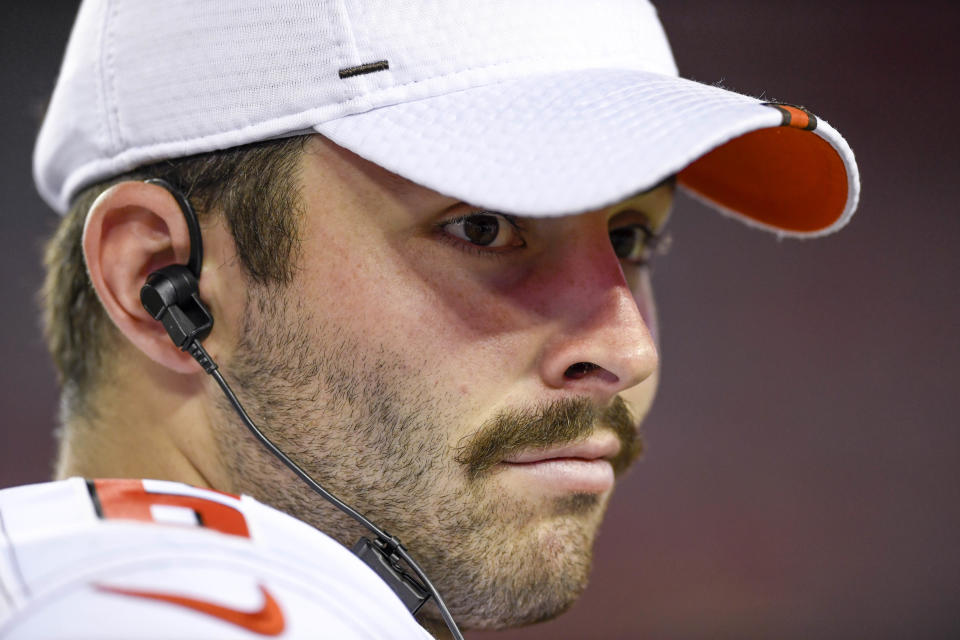
Mayfield has won games in the NFL before, which is more than some quarterbacks on this list can say, but he is who he is at this point in his career: a stopgap who is on his fourth team in twelve months. The Buccaneers are blatantly tanking their season in hopes of landing USC’s Caleb Williams or North Carolina’s Drake Maye in the 2024 draft, but Mayfield could put some points on the board with Mike Evans and Chris Godwin catching passes from him.
Kenny Pickett, Pittsburgh Steelers
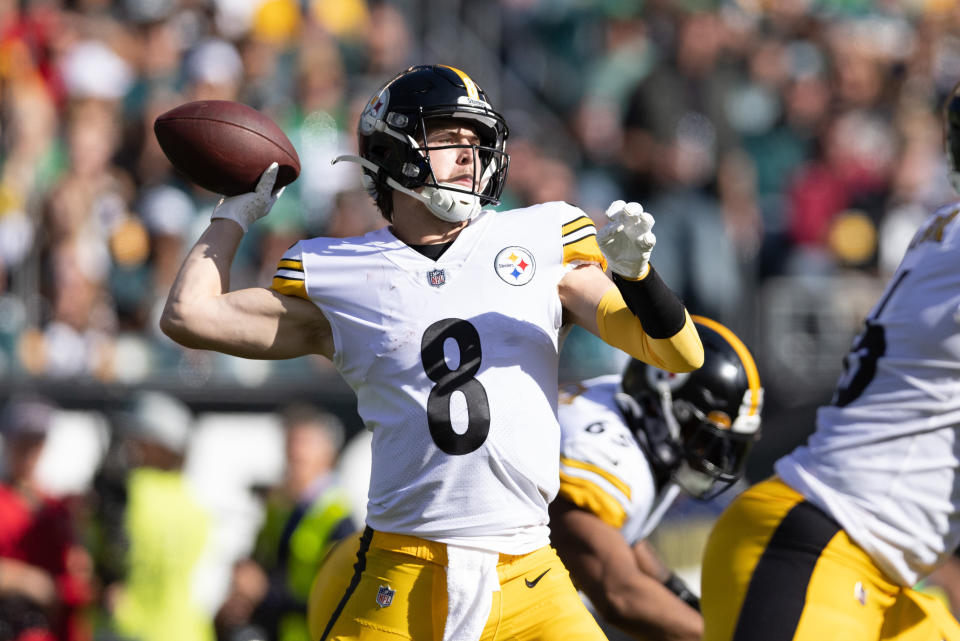
It’s kind of humiliating that the Saints lost to Pickett head-to-head last year. He was below-average on third down and inside the two-minute warning, and he threw more interceptions (9) than touchdown passes (7) while putting up 300-plus passing yards in just one game — a blowout loss to the Buffalo Bills. He was really bad last year, and it’s hard to believe he’ll improve with the same supporting cast and play caller returning for 2023.
Brock Purdy, San Francisco 49ers

Purdy was propped up by San Francisco’s many run-after-catch threats (his 6.2 yards gained after the catch per reception were third-best in the NFL), but he does deserve credit for making quick decisions in critical situations. Purdy’s 6.84 adjusted net yards per pass attempt (ANY/A, a metric which values touchdown passes, sacks, and interceptions relative to dropbacks) on third down was the seventh-best mark around the league. He’ll probably struggle to sustain that success coming off a season-ending injury to his throwing arm, but we’ll give him some props.
Mac Jones, New England Patriots
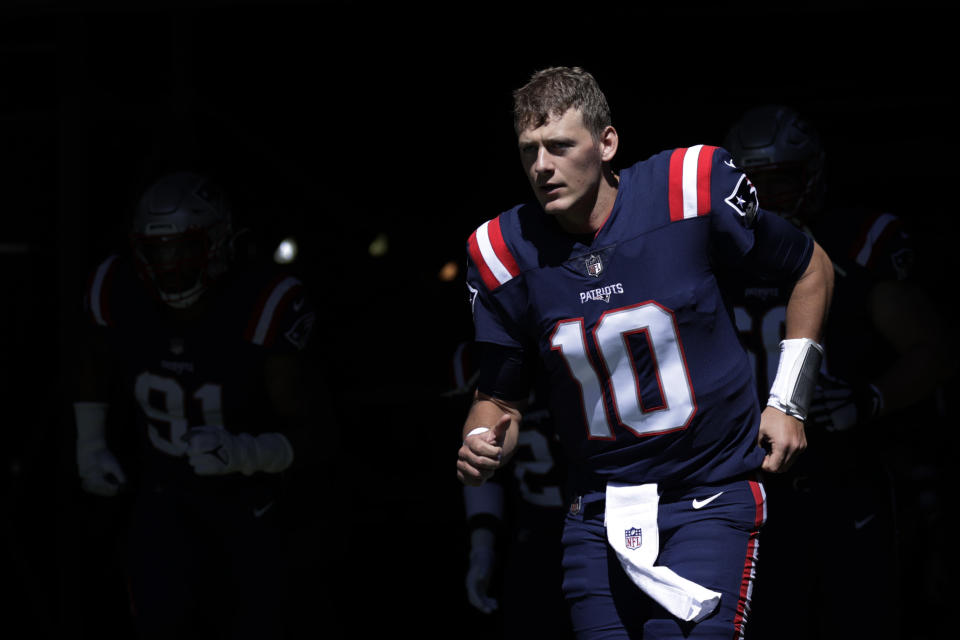
Jones might be bad. He regressed last year and was ineffective on third downs (his 5.36 ANY/A in those situations ranked 19th around the league), though he performed better when given free rein of the offense during two-minute situations (improving his ANY/A a full yard, to 6.33). Landing DeAndre Hopkins would help a lot, but so would bringing in Dalvin Cook to keep the ball out of Jones’ hands in critical moments and give the Patriots more of a running threat.
Justin Fields, Chicago Bears

The roster around him hasn’t done Fields any favors, but there can’t be any excuses for him in his third season. Through his first 27 games he’s scored 24 touchdown passes and run for 10 scores on the ground, which gives him an edge over the quarterbacks ranked behind him, but he’s too turnover-prone at this point in his career with a staggering 28 fumbles and 21 interceptions through his first two seasons. He needs to prove he’s the guy for Chicago.
Jordan Love, Green Bay Packers

The Packers have been talking up Love’s performance in the spring, but we need to see it during games after all these years warming up the bench behind Aaron Rodgers. Right now we’ll give him a mulligan for not having much NFL game experience — it’s just worth remembering how unmemorable he was in recent preseason action with the Saints and other teams.
Desmond Ridder, Atlanta Falcons
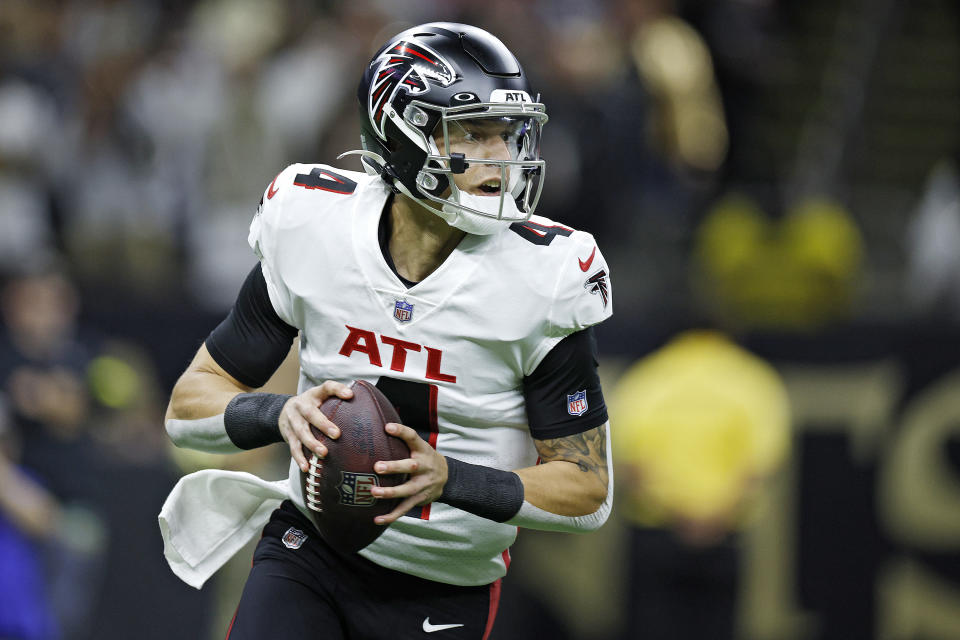
Ridder didn’t show anything special in mop-up duty last year but he’s the unquestioned starter in Atlanta for 2023. He’s also surrounded by plenty of weapons in the backfield and in the Falcons receiving corps. If he flops, it won’t be because he didn’t have enough to work with.
Ryan Tannehill, Tennessee Titans

The Titans have now twice drafted quarterbacks hoping to upgrade from Tannehill, who couldn’t get over the hump in the playoffs; maybe Will Levis can succeed where Malik Willis didn’t, though he’s receiving a greater investment and opportunity than Tennessee gave Willis last year. Tannehill is still likely the Week 1 starter (against New Orleans, of course), though last year he was one of the NFL’s worst passers on third down.
C.J. Stroud, Houston Texans
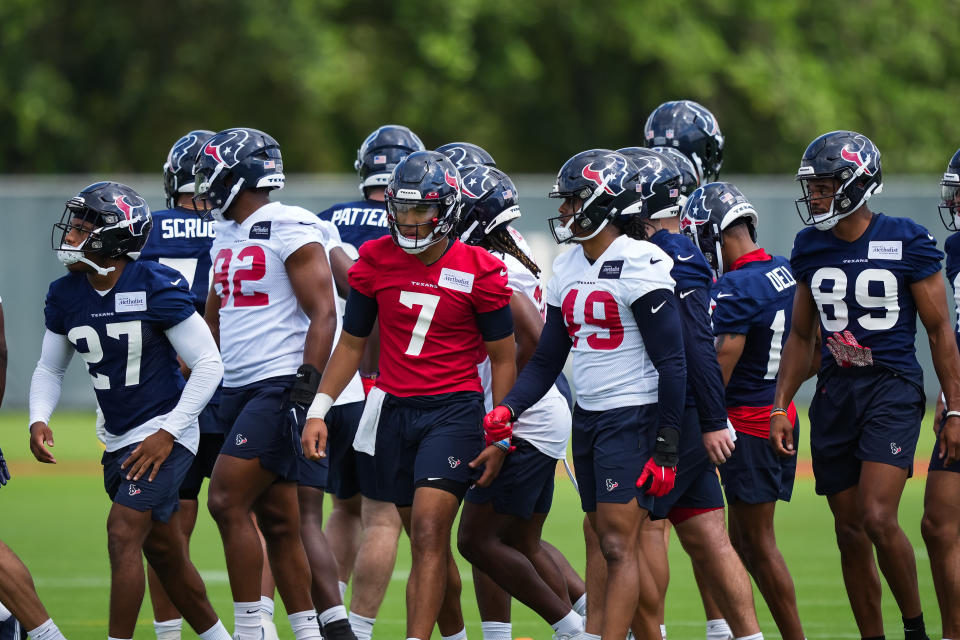
Stroud landed in the toughest spot out of this year’s first-round rookie quarterbacks, with a roster in shambles around him and a first-year coaching staff charged with developing him. He could be the real deal but it’ll take some time before he and his teammates will be ready for prime time.
Bryce Young, Carolina Panthers
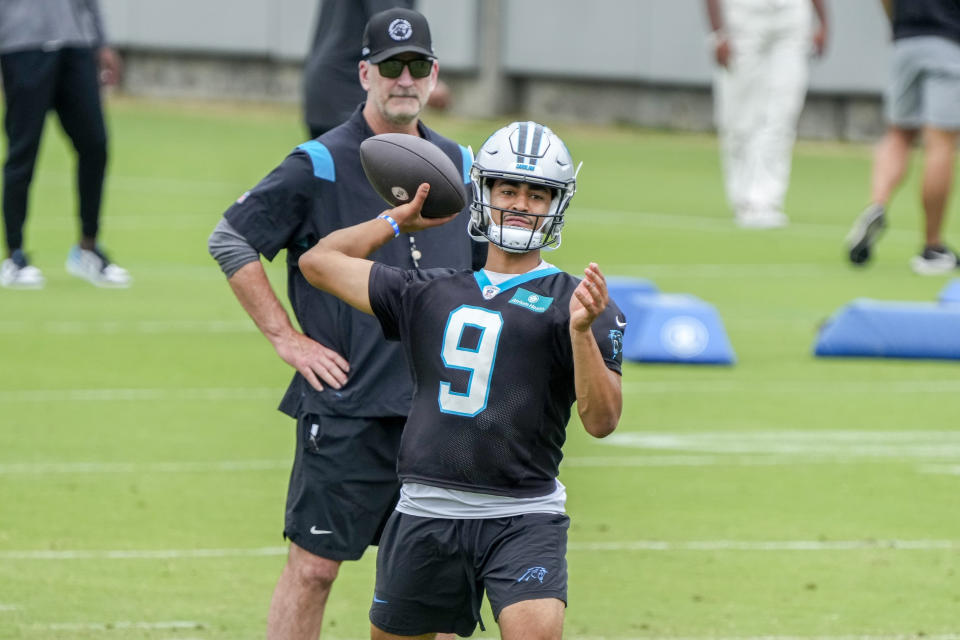
Young has some weapons around him and arguably the best-qualified coaching staff in the league to help him along the way. He needs to prove pre-draft concerns about his stature were unfounded, though, and we shouldn’t expect fireworks from Carolina right away.
Anthony Richardson, Indianapolis Colts

Richardson has the most to work with out of this year’s rookie class — he isn’t facing any questions as to whether he’ll start, and his physical gifts will buy him time to develop better skills as a passer. He’ll be a problem right away just off the strength of his arm and his legs. Pairing him with Jonathan Taylor, one of the league’s best running backs, and a proven offensive line should make the Colts offense dangerous right out of the gate.
Deshaun Watson, Cleveland Browns
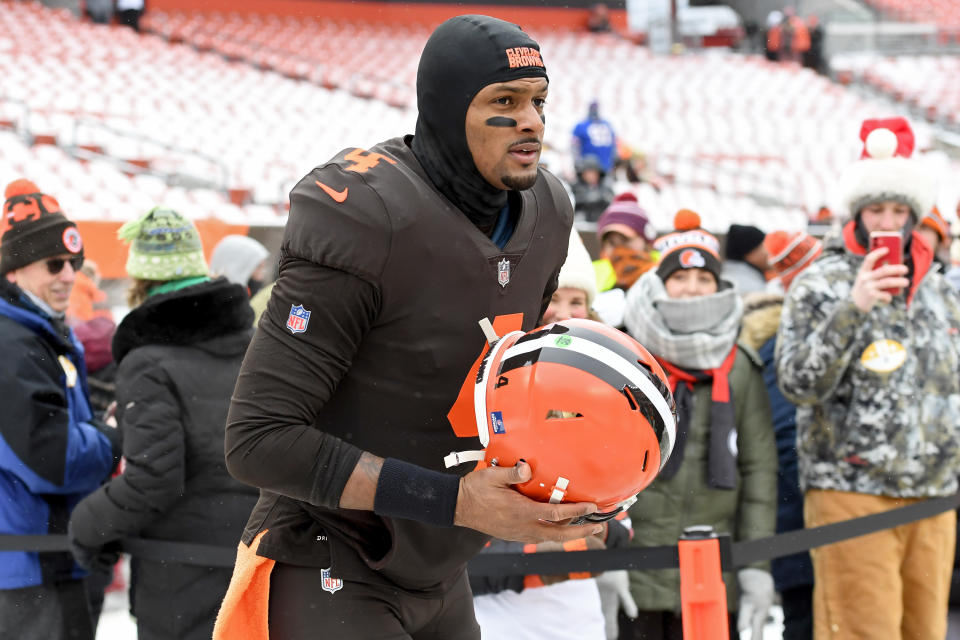
Watson looked terrible in his long-anticipated Browns debut, struggling to get in rhythm with his receivers or stay upright behind his offensive line. He was a below-average passer both inside the two-minute warning and on third and fourth downs. He should be facing a ton of pressure to validate the investment Cleveland made in him last year.
Russell Wilson, Denver Broncos
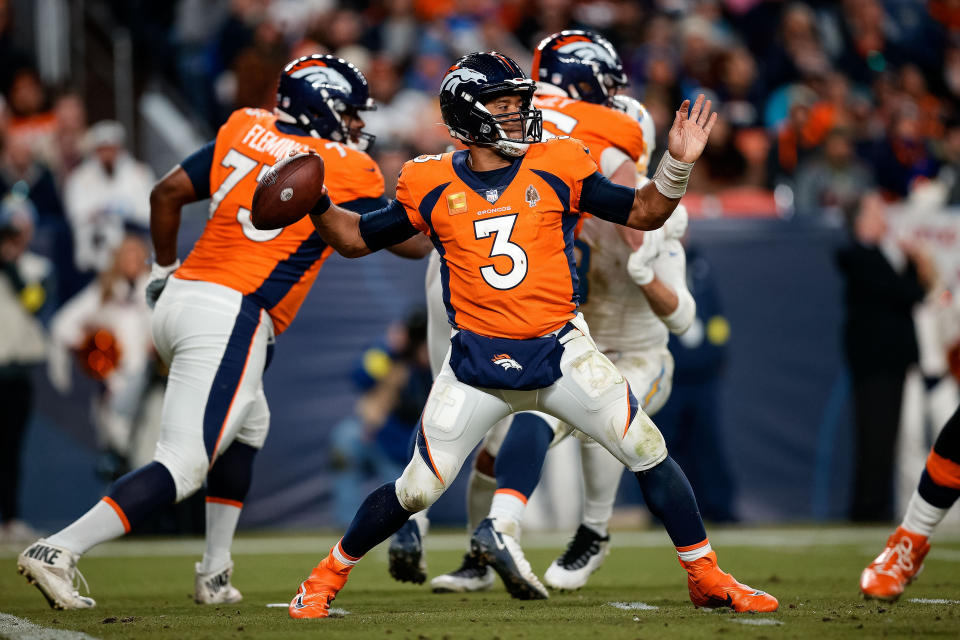
In a similar vein, Wilson is another veteran quarterback who starred for one team but collapsed on another. The good news is he has plenty of talent around him and a coach with a Hall of Fame resume at his side. We’ll see if Sean Payton can help Wilson return to form.
Jimmy Garoppolo, Las Vegas Raiders

Garoppolo was brought in to complete the Raiders’ New England-era rebrand, but complications from surgery have put his future with the team in doubt before he’s taken a single snap in practice. He’s competent enough, but durability concerns have begun to define Garoppolo’s career.
Daniel Jones, New York Giants

Jones finally put together a strong season for the Giants — if you grade him on a curve based off his awful first three years. His rushing ability is an asset (his 44.3 rushing yards per game ranked fifth among quarterbacks, and he tied Josh Allen with 7 touchdown runs), but he’s still not much of a threat as a passer. Jones ranked 28th in ANY/A on both third down and inside the two-minute warning last season. He needs to do more to elevate New York’s passing game.
Derek Carr, New Orleans Saints
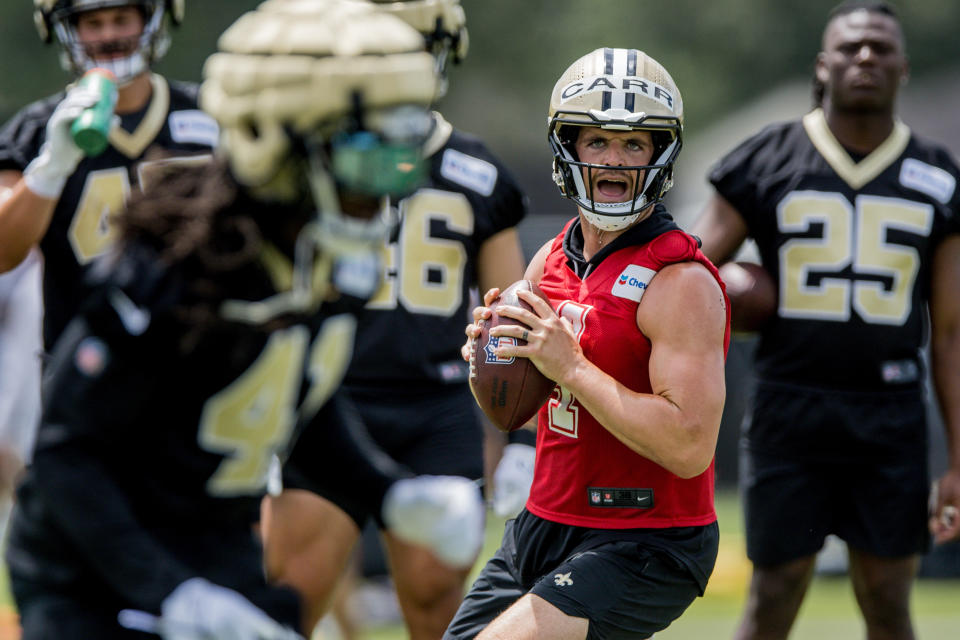
Carr struggled in Josh McDaniels’ vertically-oriented offense last year, but he’s installing a friendlier lateral system in New Orleans and it won’t take much for him to upgrade what we’ve seen from Saints quarterbacks Andy Dalton, Jameis Winston, Trevor Siemian, Ian Book, and Taysom Hill in the years since Drew Brees’ retirement. Carr is effective in using his athleticism to get himself out of jams on third and fourth down, but he needs to execute more efficiently inside two-minute warning like we saw from him earlier in his career.
Matthew Stafford, Los Angeles Rams
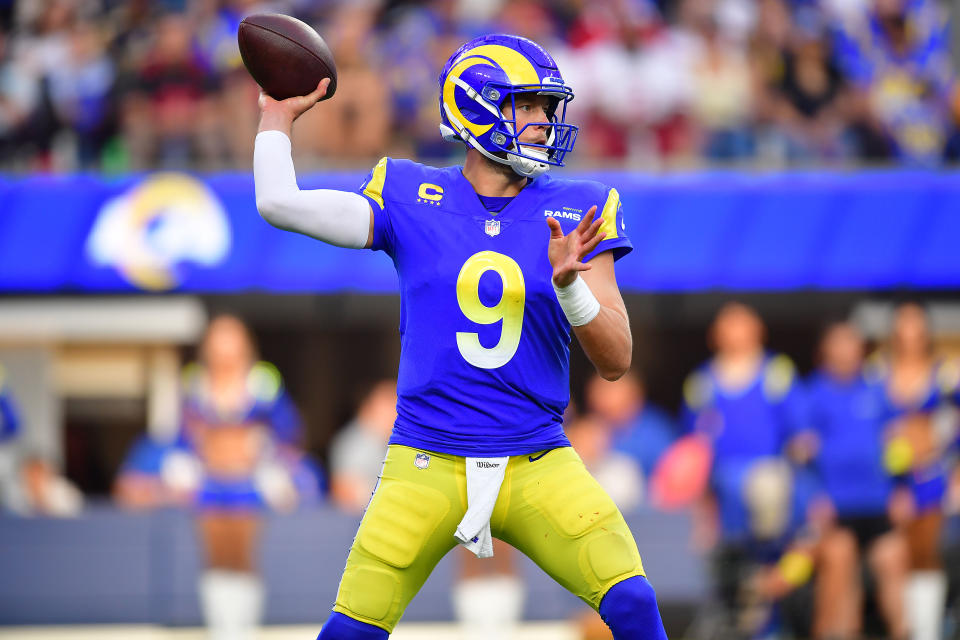
Stafford is stuck on one of the most talent-deficient rosters in the league, with a porous offensive line in front of him and few accomplished pass-catchers running routes in Sean McVay’s offense. The Rams will win games off the strength of Stafford’s arm and McVay’s play-calling, but he could take a big step back with so little help around him in 2023.
Kirk Cousins, Minnesota Vikings
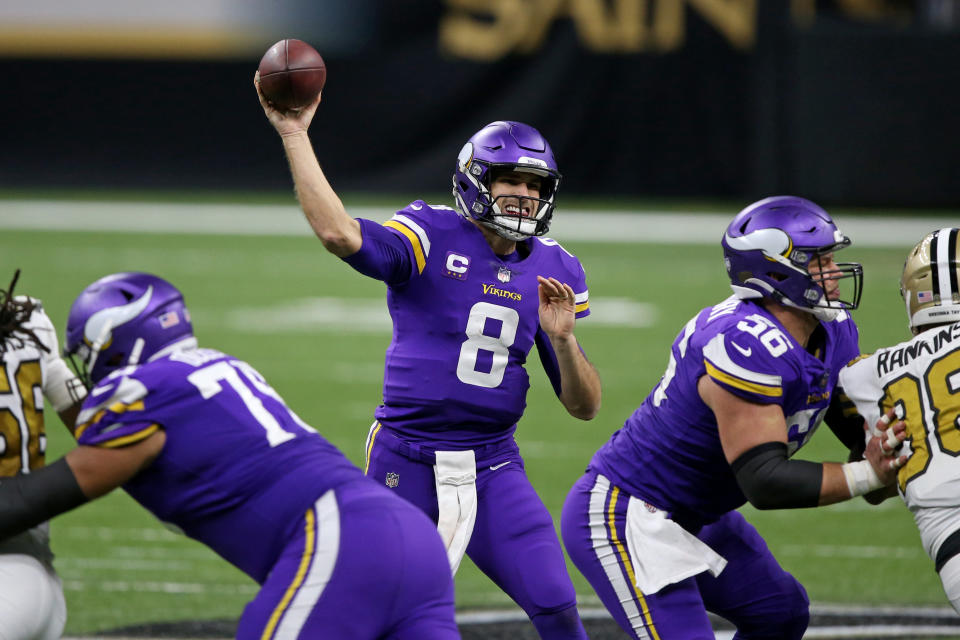
The new prime meridian for quarterback play (if you’re better than Cousins, you’re in good standing, but if you’re worse you might be in trouble), Cousins offers more experience than many passers around the league but his lack of a killer instinct or aggressive nature in critical situations stands out. He ranked 20th in ANY/A inside the two-minute warning and the Vikings lost games last year because of his habit for throwing perilously short of the first-down marker.
Jared Goff, Detroit Lions

Goff thrived in the Lions offense last year with Ben Johnson calling plays, but he deserves credit for making some difficult throws in clutch situations. Goff ranked third in ANY/A on third and fourth downs and no quarterback posted a higher ANY/A inside the two-minute warning. The jury’s out on whether he’s a long-term solution at quarterback for Detroit, but right now he’s a quarterback they can win with.
Kyler Murray, Arizona Cardinals
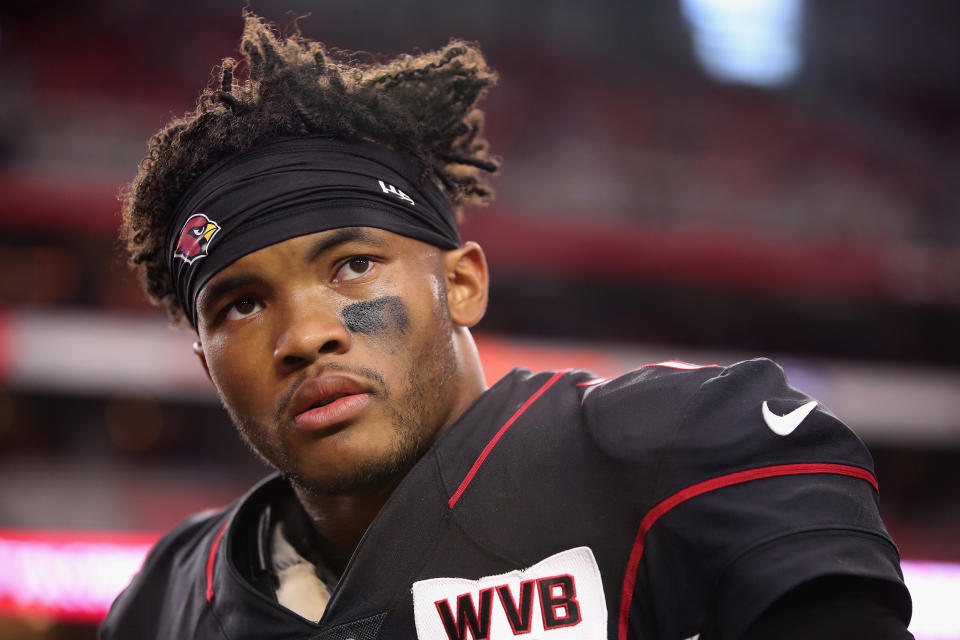
Murray is a confident passer who adds a dangerous element to the game with his legs, though it’ll take some time before he’s able to return from last year’s late-season ACL injury. Arizona is going to be in the tank for a year or two which buys him time to recover, but once he’s back on the field Murray must improve on third downs and inside the two-minute warning — he ranked among the league’s worst performers in each category.
Aaron Rodgers, New York Jets
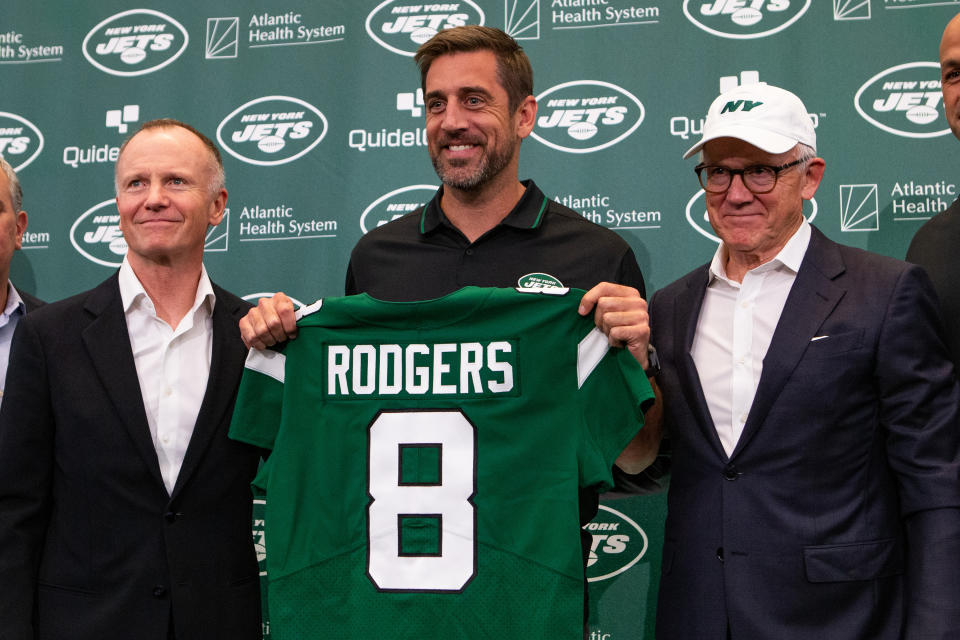
Is Rodgers washed up? Probably not, but he’s much closer to a league-average quarterback than the top-five talent we’re used to seeing. New York does have a better supporting cast than he struggled to elevate in Green Bay, so we’ll see whether he can get them to the playoffs in a highly competitive division.
Justin Herbert, Los Angeles Chargers
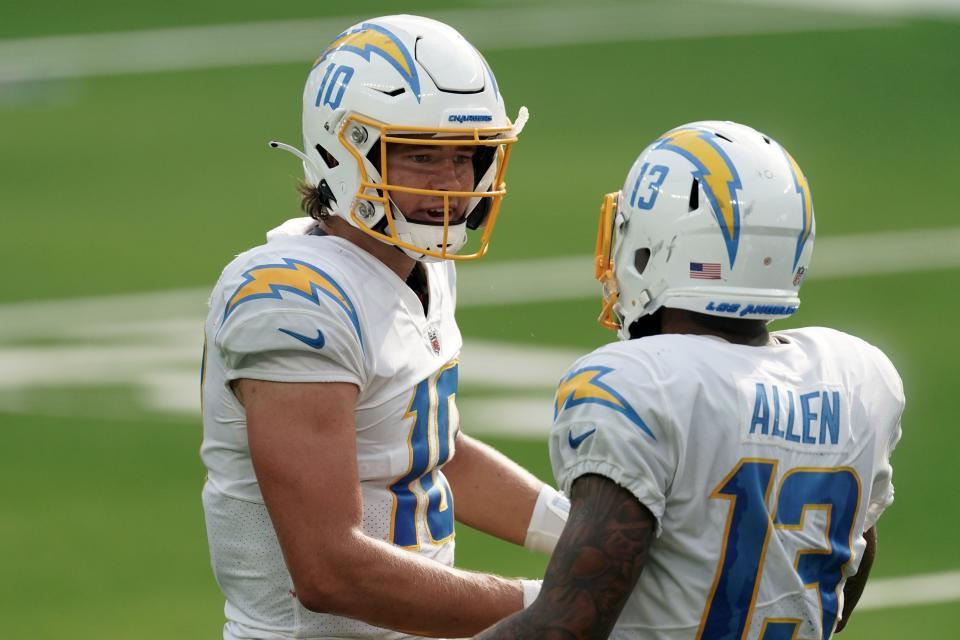
There’s so much to like about Herbert on paper. He’s got a huge arm, an electrifying highlight reel, and plenty of weapons in his receiving corps. But he choked in a big spot in the playoffs last year and he’s just one win over .500 through his first three seasons. An upgrade at offensive coordinator, swapping Joe Lombardi for Kellen Moore, should be good for his development.
Geno Smith, Seattle Seahawks

Smith was mighty impressive last year after spending so much time wandering the desert looking for his next opportunity. He made some very difficult throws under pressure and kept the Seahawks offense on schedule, challenging some of the best defenses around the league along the way. He has another exciting weapon at his disposal in former Ohio State slot receiver Jaxon Smith-Njigba.
Trevor Lawrence, Jacksonville Jaguars
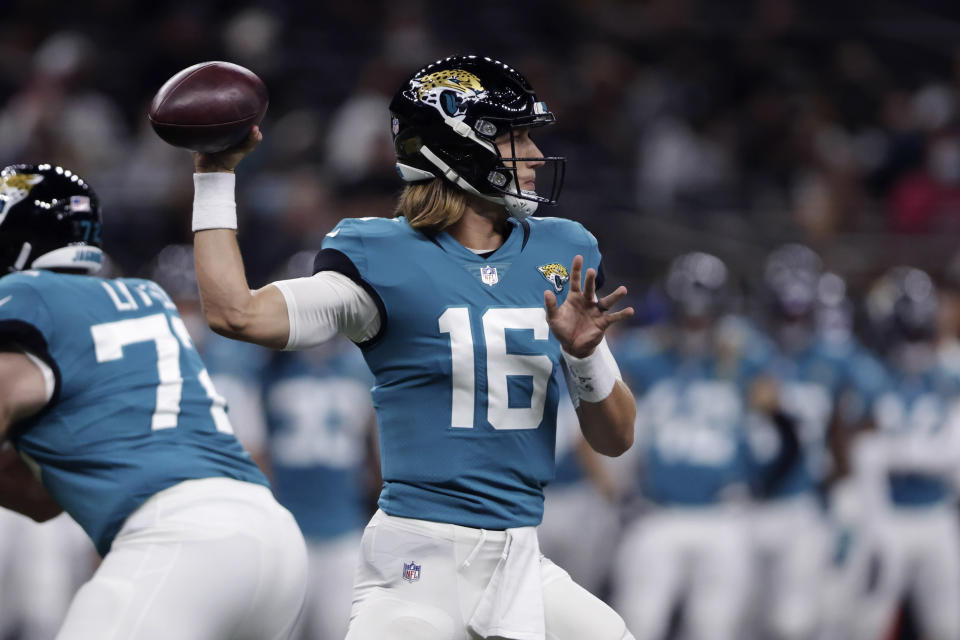
Lawrence finally looked like the quarterback everyone expected him to be in 2023 under quality coaching from Doug Pederson, and now he’s added a playmaking receiver to his offense in Calvin Ridley. He should continue to develop into a top-shelf quarterback in this league.
Tua Tagovailoa, Miami Dolphins
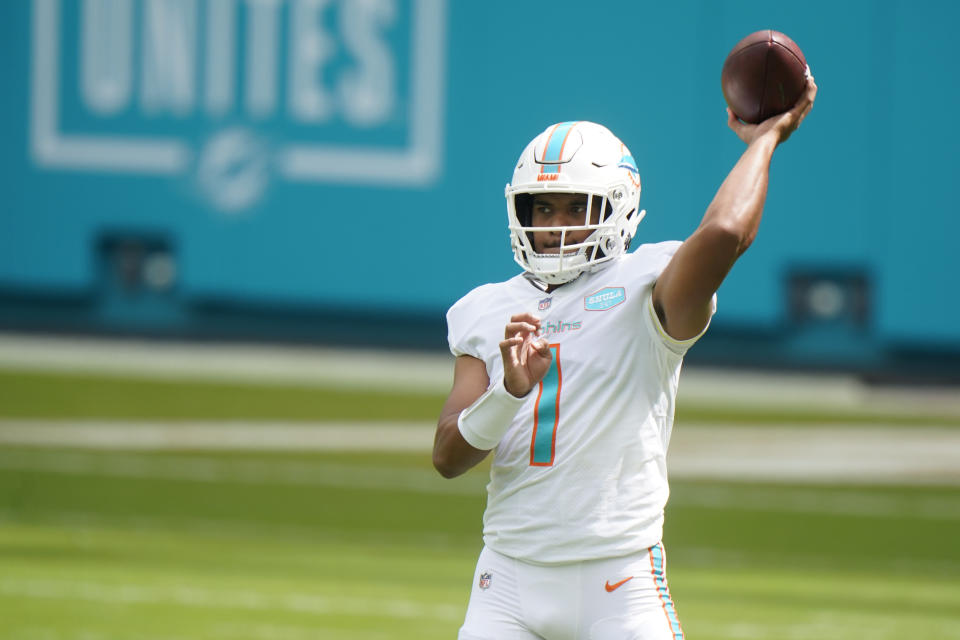
Everything hinges on Tagovailoa’s health. If his body can hold up after a punishing 2022 campaign in which he was repeatedly concussed, he has a ton of momentum behind him. He posted the NFL’s best ANY/A on third and fourth down and ranked second-best inside the two-minute warning.
Lamar Jackson, Baltimore Ravens

The Ravens made a smart move to recruit Todd Monken and modernize their passing attack around Jackson, which should pay off with a return to the top of the AFC hierarchy. Jackson has always been regarded highly for his rushing ability but he’s underrated as a passer, and he should shine in an offense that lets him go to work.
Dak Prescott, Dallas Cowboys
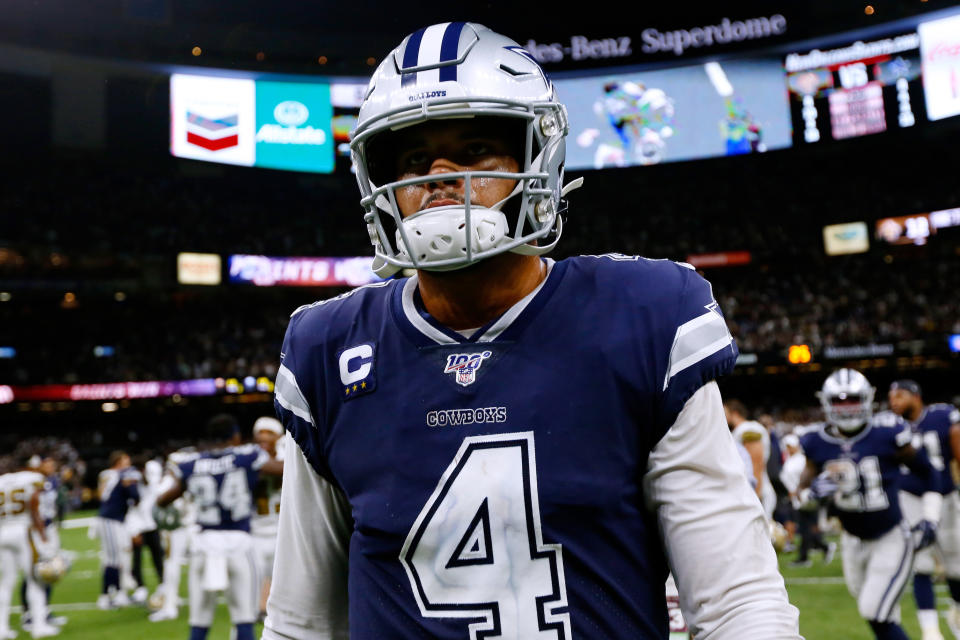
Prescott is one of the league’s better quarterbacks before the snap, often doing a great job of identifying pressure and adjusting his protection while reacting to what the defense is showing him. But Dallas going from Kellen Moore to Brian Schottenheimer at offensive coordinator might not be the right move for his continued success, and the Cowboys have done a poor job of retaining receiving talent in recent years.
Joe Burrow, Cincinnati Bengals
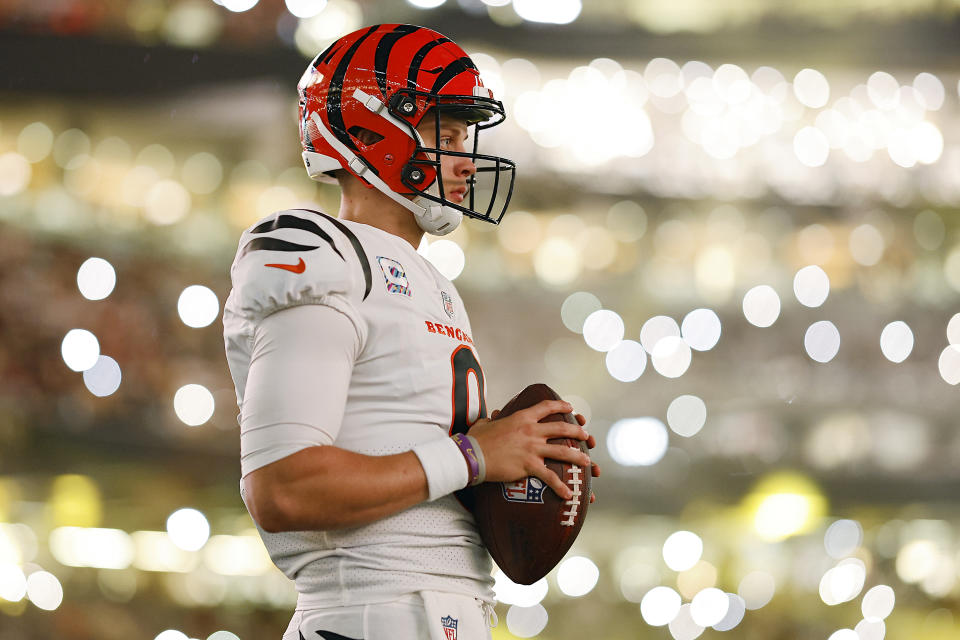
Burrow confirmed his bonafides as a franchise quarterback with another strong season after leading Cincinnati to the Super Bowl, and he’s going to continue to be a force in the AFC — at least until the Bengals have to start choosing how to whittle down their salary cap commitments before his big extension.
Josh Allen, Buffalo Bills
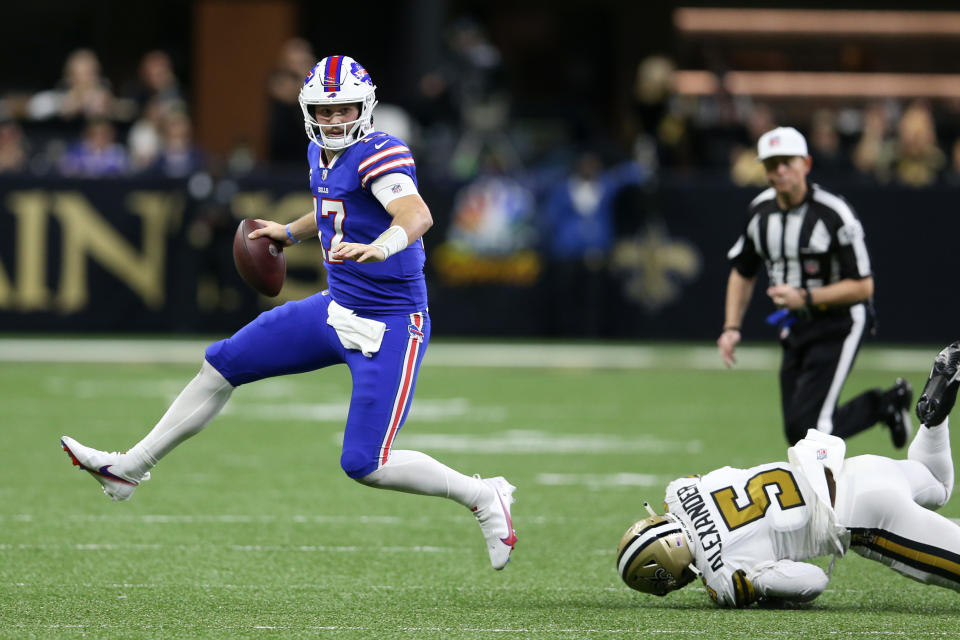
Allen needs to prove he can get it done in the playoffs, but there aren’t many quarterbacks more exciting to watch each week than him. He can run as well as anyone in the league and throw over the top of any defense he’s ever seen. He deserves a ton of props for developing into such a dangerous quarterback after his college career left a lot to be desired.
Jalen Hurts, Philadelphia Eagles
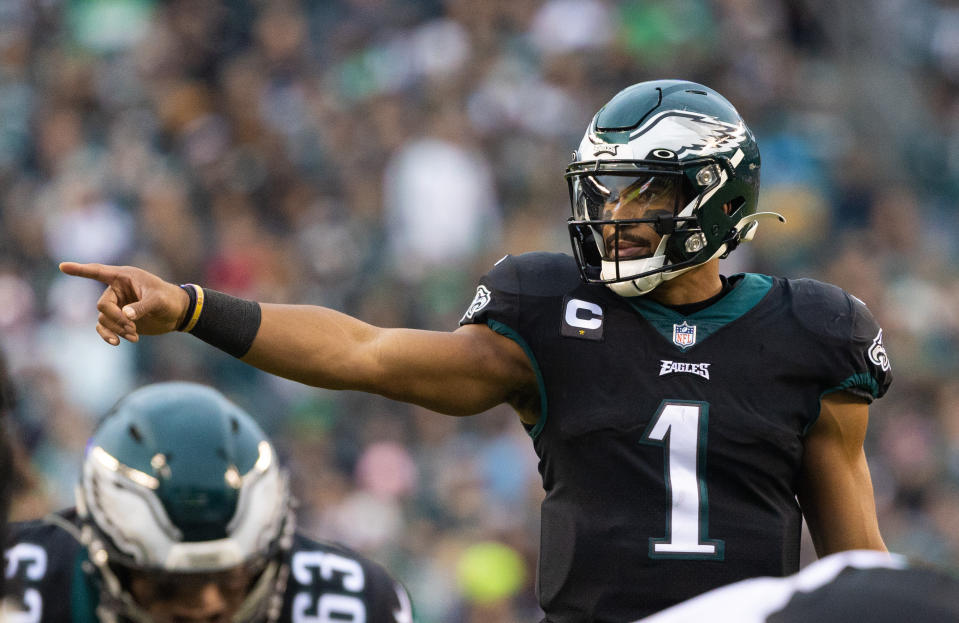
Hurts is another quarterback who initially got by with the ability to make plays with his legs, which bought time for him to develop his skills as a passer — and now he’s extremely challenging to defend in both areas. He ranks fifth in ANY/A both on third and fourth downs and inside the two-minute warning, and the Eagles will be counting on him this year after an offseason full of turnover defensively.
Patrick Mahomes, Kansas City Chiefs

Mahomes is the best quarterback of his generation, no question. No one throws as accurately as far down the field as he does each week. The Chiefs are never out of a game with Mahomes under center, and he’s going to be the final hurdle in front of a lot of teams in the playoff picture come December and January.

